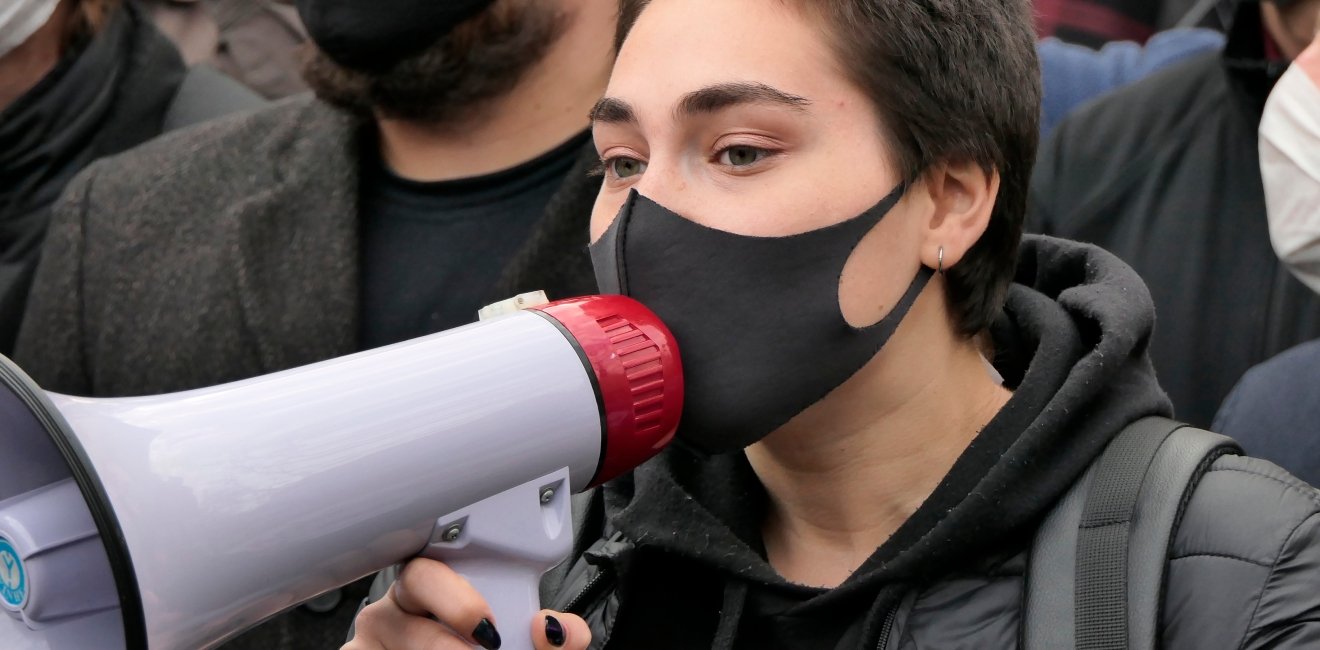
A blog of the Kennan Institute
BY KATERYNA ODARCHENKO
Ukrainian legislation upholds women’s rights, and specifically opens up opportunities for women (as well as men) to participate in the political life of the nation at high levels. But the country is far from achieving gender equality, both in daily life and in the political arena. In part, some entrenched stereotypes and administrative obstacles prevent Ukrainians from achieving equality between men and women. Societal perceptions of women in politics are positive; however, the results of the 2021 local elections demonstrate differences in trust in women politicians between urban and rural areas. An outstanding question is how to reframe Ukrainian society and the political system in a way that would advance gender equality in Ukraine writ large.
Gender Inequality in Domestic Affairs
First, a bit of background. As is true in most societies around the world, women are by far the more frequent victims of domestic violence than men, and many instances of domestic violence go unreported. Ukrainian women also earn less than men doing the same type of work, having to overcome a salary gap of almost 20 percent—when they are able to access the jobs. For Ukraine still preserves a category of “non-female professions” from which women are proscribed, including work underground, in mines, and in certain “limited access” positions with the Armed Forces of Ukraine, though women are allowed in combat positions.
In addition to these examples of incomplete equality, gender stereotypes are still powerful influencers in Ukrainian society. This point was made starkly in a Razumkov Centre survey conducted in March 2020, according to which 83 percent of respondents thought that a woman’s most important task was to take care of her home and family, whereas 75 percent considered that a man’s most important mission was to earn money. Further, 78 percent thought that women were more likely than men to be guided by emotions in making decisions.
Nonetheless, according to the Global Gender Gap Index 2020, Ukraine has closed 72 percent of the gender gap in the past three years, placing it among the top third of countries. This survey is based on a comparison of women and men in such categories as economic participation and opportunities (labor force participation, wage equality for similar work, income), educational attainment (literacy, enrollment in education), health and survival (sex ratio at birth and healthy life expectancy), and political empowerment (women in politics). For comparison, the top five countries on the Global Gender Gap rating have closed at least 80 percent of the gap, with Iceland, number one, having closed 82 percent of its gender gap. Both legislation and activism have contributed to Ukraine’s progress, and a greater involvement of women in politics should see continuing erosion of the gap.
Women in Ukrainian Politics
The representation of women in Ukrainian politics is advancing slowly, though much remains to be done. The first convocation of parliament in independent Ukraine (1990–94) seated only twelve women (about 2.5 percent); the remaining 463 MPs were men. Nearly every convocation since then has seen a slight uptick in women MPs, bringing their share to 12 percent in the eighth convocation (2014–19). With the arrival of the Servant of the People party and Volodymyr Zelensky’s election to the presidency, the situation began to improve. In the current, ninth Verkhovna Rada, more than 20 percent of seats are held by women. And the effect has not been limited to the central government in Kyiv.
During the local elections held on October 25, 2020, overall, almost 38 percent of deputies elected were women. This figure ranged from 28 percent for the regional councils to 42 percent for the village councils. Notably, the share of women elected increased moving from larger administrative units to smaller, local levels of government.
The situation with gender equality in the Cabinet of Ministers of Ukraine, where positions are handled by appointment rather than by election, is less bright. In the government of Prime Minister Denys Shmyhal, only three of the twenty-three ministers, or about 13 percent, are women—significantly lower than the share of women holding local elected office across Ukraine. It seems that the higher the level of a state institution, the fewer women there are.
Solving the Problem of Gender Inequality in Ukrainian Politics
Opinion polls yield optimistic forecasts about Ukrainian women’s future engagement in politics. The same Razumkov Centre poll that elicited a strong belief among respondents that women’s top job was in the house and home also showed that 82 percent of Ukrainian citizens have a positive attitude toward the fact of women entering politics, and 39 percent believe there are too few women in Ukrainian politics. The poll results indicated that almost half of Ukrainians want to see more women in the Cabinet of Ministers, the Verkhovna Rada, and among local elected officials. And 54 percent of respondents believed that not enough parties in Ukraine represented the interests of women.
These results are a promising platform on which to build equality programs, perhaps aimed first at women. Ukrainian women emerging from traditional societal roles and perceptual frameworks may not fully realize the benefits to them and to society to be won from having a greater representation of women in politics. Training sessions for women, conducted before or simultaneously with public discussions involving any interested parties on gender equality, should improve the picture. Reframing politics and public service as professions among the thousands of other professions women may choose to follow and where they can succeed should reduce inhibitions and mitigate fears. Examples of today’s successful living women politicians who could serve as inspiring role models should help Ukrainian women overcome their reticence to participate politically.
The trend toward an increasing number of women in government—a trend that is supported by voters—can be expected to lead to positive results in the future. The more women there are in the central and local governments, the easier it will be for Ukraine to climb the ladder toward gender equality.
The opinions expressed in this article are those solely of the author and do not reflect the views of the Kennan Institute.
Author


Kennan Institute
After more than 50 years as a vital part of the Wilson Center legacy, the Kennan Institute has become an independent think tank. You can find the current website for the Kennan Institute at kennaninstitute.org. Please look for future announcements about partnership activities between the Wilson Center and the Kennan Institute at Wilson Center Press Room. The Kennan Institute is the premier US center for advanced research on Eurasia and the oldest and largest regional program at the Woodrow Wilson International Center for Scholars. The Kennan Institute is committed to improving American understanding of Russia, Ukraine, Central Asia, the South Caucasus, and the surrounding region through research and exchange. Read more

Explore More in Focus Ukraine
Browse Focus Ukraine
Talking to the Dead to Heal the Living

Ukrainian Issue in Polish Elections


